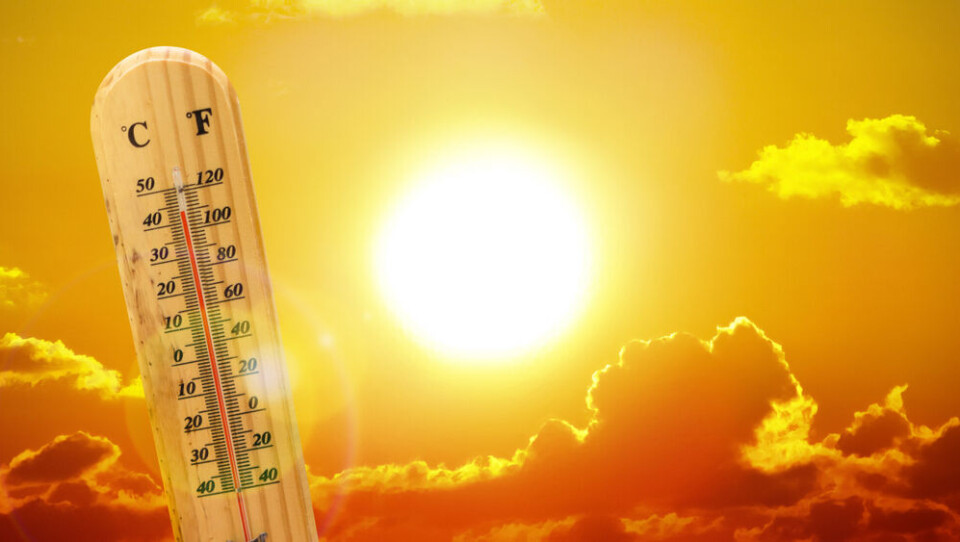Explained: France’s ‘heatwave plan’ and how it may affect residents
A colour-coded ‘plan canicule’ is launched every summer to help people manage the effects of high temperatures
France has an annual plan to manage the risks of heatwaves
Ed Connor / Shutterstock
Every year France puts in place a summer-long system to help manage heatwaves, known as the “plan canicule”.
It was first set up following the 2003 European heatwave during which over 14,000 people in France died.
The plan begins every year on June 1 and lasts until September 15, although some government documentation and departmental authorities state that it ends on August 31. This could be because the period in which the plan is “active” can be extended, based on weather conditions.
It is based on four different alert levels depending on the severity of the heatwave: Green, yellow, orange and the maximum level, red.
The plan is in place to protect those who are the most vulnerable to heatwaves, such as the elderly, children, those with certain disabilities, hospital patients, etc.
Read more: Heatwave begins in south-west France: what temperatures to expect
The four levels of alert
Green - seasonal observation
Starting from June 1 every year, all French departments are automatically placed on green alert for heat waves. This means that there are no particular concerns.
From this point, national and local relevant authorities start to ensure that they are prepared for heatwaves. Simultaneously, Météo-France begins its surveillance of heatwaves and a national helpline to provide information is opened.
The number is 0800 06 66 66 and is open Monday to Saturday, 09:00 to 21:00. It is free to call from landlines while your usual mobile costs apply.
Météo-France updates its alert map at 06:00 and 16:00 everyday, or as necessary based on changing events.
You can keep informed of heatwave alerts in your department at this link.
Yellow - heat warning
This alert level is labelled as “be attentive” by Météo-France. It means departments labelled yellow will be observed more closely by relevant authorities with a view to them being upgraded to orange alert.
During this phase, various services, such as emergency services, prefectures and mairies etc start to prepare for orange alert and begin to communicate advice on how to manage during a heatwave.
Orange - heatwave alert
Once this level is reached, the department's local prefect takes all necessary measures to address the heatwave, in accordance with the Plan de Gestion d’une Canicule Départemental (PGCD). The following steps are usually taken:
- Communication is increased to make people aware of the dangers of heatwaves and what they can do
- In retirement homes, a “plan bleu” can be announced, which involves greater mobilisation of staff and resources to counter specific threats generally, for example Covid, an outbreak of flu, as well as heatwaves / other
- Ambulance and nursing services are mobilised
- Mairies establish lists of people vulnerable to heatwaves and can offer support
- Additional support is given to homeless people
Red - extreme heatwave
This level is announced only during exceptional, very intense and long-lasting heatwaves.
During a red-alert heatwave, there are often droughts, issues with the supply of drinking water, demand for hospitals and / or funeral homes become overrun, there are power cuts and forest fires, working hours or practices are adjusted, etc.
The government will set up an inter-ministerial crisis group to help manage the heatwave.
How are the alert levels decided on?
The alert levels are based on various elements (and not just the temperature) including:
- Meteorological factors - temperatures, humidity, etc
- Duration - how long the heatwave lasts
- Services - potential mobilisation of emergency services, hospital rates, number of people in retirement homes, state of the hospitals, etc
- Other factors - pollution, urbanisation of the department, natural resources, water supply
A spokesperson for Météo-France told The Connexion that it is not a simple case of when temperatures increase, new alert levels are reached. She said that it is a combination of all the factors listed above that influence the classification of departments.
These factors are considered by national health agency Santé publique France, the French government, Météo-France and local authorities.
Once an alert level has been defined it is up to departmental prefectures to put in place preventative and protective measures.
What qualifies as a heatwave in France?
The term 'heat wave' in English is applied more generally to any period when temperatures feel higher than usual.
In France, meteorologists will declare a “canicule” if temperatures exceed expected levels for the time of year during the day and stay high at night for a period of at least three consecutive days or more.
The temperature thresholds depend on the region. Paris would be classed as being in the midst of a canicule if the temperature is higher than 31C during the day and 21C at night for more than three days, but in Marseille this label would only be applied for highs of 36C and 24C.
Another reason for the lack of fixed canicule temperatures is that certain meteorological conditions can make the air feel hotter and more humid than it actually is, increasing the effect on the general public.

























